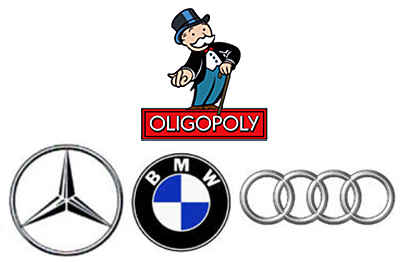Why is the automobile industry considered an oligopoly?
Deciphering the Oligopoly Nature of the Automobile Industry
The automotive realm stands as a classic example of an oligopoly, shaped by intricate market dynamics and dominated by a handful of colossal corporations. An oligopoly materializes when a select few major players wield substantial influence over the market, fostering fierce competition and erecting formidable barriers to entry for aspiring newcomers.
Within the automotive domain, this oligopolistic grip stems primarily from the exorbitant investments requisite for manufacturing, expansive distribution networks, and pioneering research and development endeavors.

Drivers Behind the Automotive Oligopoly:
Formidable Barriers to Entry
The automotive sector demands mammoth initial capital injections to erect manufacturing behemoths, establish cutting-edge research facilities, and weave intricate distribution webs. This financial threshold poses a formidable deterrent for prospective entrants.
Existing automotive giants leverage economies of scale, rendering it arduous for smaller contenders to mount a viable challenge.
Homogeneous Product Landscape
Despite the plethora of automotive brands, product differentiation often remains minimal. The offerings from various companies tend to mirror each other, underscoring the pivotal role of brand loyalty and reputation.
Substantial investments in marketing and branding serve to further cement the hegemony of established players.
Dominance Over Distribution Channels
Major automotive manufacturers wield considerable control over distribution avenues, encompassing dealerships and service centers.
This dominion empowers them to sway pricing dynamics, orchestrate promotional campaigns, and even regulate consumer access to specific models, thereby bolstering their market supremacy.
Technological Advancements and Intellectual Property
Automotive production mandates incessant technological strides to bolster safety, augment performance, and enhance environmental sustainability.
Corporations funnel substantial resources into research and development endeavors to outpace rivals, often culminating in patented innovations that confer a competitive edge.
Global Prowess and Consolidation
Numerous automotive behemoths boast a global footprint, spanning production facilities, sales networks, and strategic partnerships across diverse continents.
The flurry of mergers and acquisitions within the industry has facilitated the amalgamation of market clout among a select cadre of dominant players, further entrenching the oligopolistic character of the automotive landscape.
Noteworthy Insights

The Reign of the “Big Three”: Within the United States, the automotive arena has long been lorded over by the triumvirate of General Motors, Ford, and Chrysler (now a part of Stellantis). These titans have historically wielded considerable market share, profoundly shaping the trajectory of the industry.
Influence of Japanese Titans: During the latter half of the 20th century, Japanese automotive juggernauts – example: Toyota, Honda, and Nissan emerged as potent contenders on the global stage. Their unwavering focus on quality, efficiency, and innovation posed a formidable challenge to the dominance of their Western counterparts, thereby contributing to the oligopolistic fabric of the industry.
Rise of Electric Vehicles (EVs): The ascendance of electric vehicles (EVs) has heralded the advent of new contenders within the automotive arena, epitomized by Tesla. While traditional automakers initially lagged behind in EV innovation, they have since redoubled their efforts to stake their claim in this burgeoning segment, further cementing the oligopoly’s sway with a technological frontier.
The oligopolistic contours of the automotive industry crystallize as a confluence of towering barriers to entry, strategic product differentiation tactics, hegemony over distribution channels, relentless technological innovation, and the global consolidation spurred by mergers and acquisitions.
A nuanced comprehension of these intricacies is indispensable for navigating the competitive terrain and deciphering market trends within the automotive sphere.












